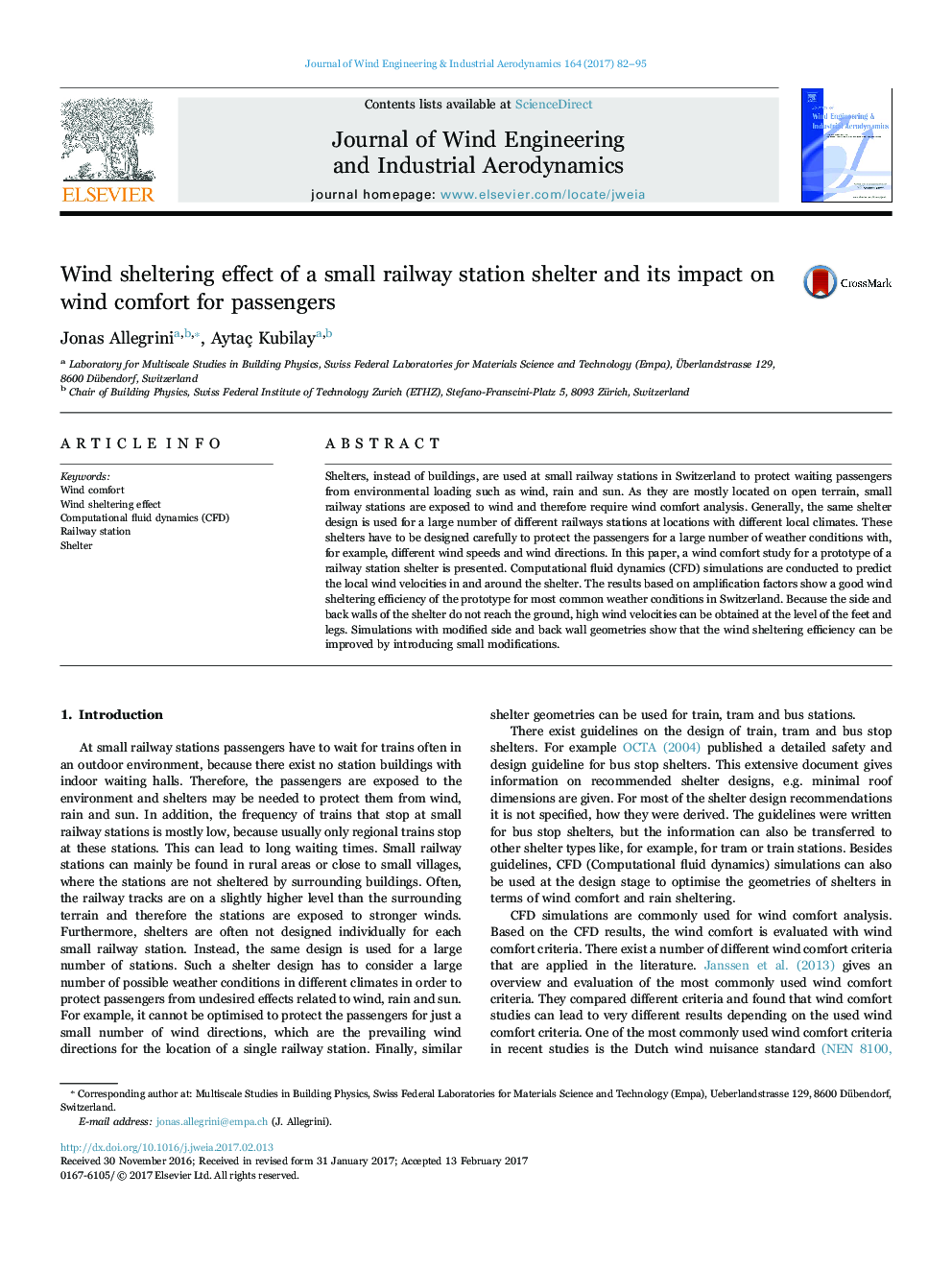| Article ID | Journal | Published Year | Pages | File Type |
|---|---|---|---|---|
| 4924891 | Journal of Wind Engineering and Industrial Aerodynamics | 2017 | 14 Pages |
Abstract
Shelters, instead of buildings, are used at small railway stations in Switzerland to protect waiting passengers from environmental loading such as wind, rain and sun. As they are mostly located on open terrain, small railway stations are exposed to wind and therefore require wind comfort analysis. Generally, the same shelter design is used for a large number of different railways stations at locations with different local climates. These shelters have to be designed carefully to protect the passengers for a large number of weather conditions with, for example, different wind speeds and wind directions. In this paper, a wind comfort study for a prototype of a railway station shelter is presented. Computational fluid dynamics (CFD) simulations are conducted to predict the local wind velocities in and around the shelter. The results based on amplification factors show a good wind sheltering efficiency of the prototype for most common weather conditions in Switzerland. Because the side and back walls of the shelter do not reach the ground, high wind velocities can be obtained at the level of the feet and legs. Simulations with modified side and back wall geometries show that the wind sheltering efficiency can be improved by introducing small modifications.
Related Topics
Physical Sciences and Engineering
Energy
Renewable Energy, Sustainability and the Environment
Authors
Jonas Allegrini, Aytaç Kubilay,
